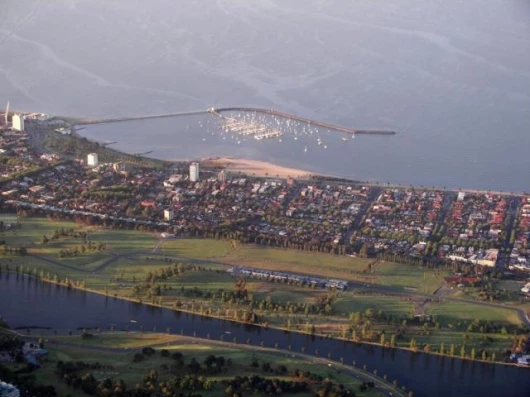Ballooning went mainstream in 1960 when the Raven prototype ‘modern’ hot-air balloon demonstrated that man had finally found a cost-efficient, lightweight material for the balloon envelope in the form of polyurethane coated nylon, with the burner powered by cylinders of propane. The first U.S. national championships followed in 1963 and further advances to material technology and LPG burners have seen the sport evolve into a substantial tourism industry with more than 5000 registered balloon pilots in the United States and a larger number in Europe. Every major city in the world offers balloon flights to tourists and if it is something you have never done, we thoroughly recommend it. The following photographic essay was taken yesterday over Melbourne, Australia in a Hot Air Balloon using a Sony DCS-F707 Cybershot 5 megapixel 5x optical zoom camera and a Kodak Easyshare P850 5 megapixel 12x optical zoom camera.
Being highly dependent on the weather, balloons cannot fly every day of the year. In Melbourne, renowned for its changeable weather, that means 150 days a year of flying. “We have a saying,” says our pilot. “It is much better to be on the ground wanting to be in the air, than the other way around.”
Balloon Sunrise has been flying since 1986 and has a number of balloons which take off to fly over Melbourne each flying day. It’s clearly a well-oiled machine these days, with a two-man crew servicing each balloon – one pilot and one bus driver who ferries the passengers to the take-off point where the balloon and envelope are unloaded, filled and in the air within 30 minutes of the bus stopping.
With a scheduled time of around 60 minutes in the air, the winds are tested on-route to the take-off area by blowing up some navigation balloons, attaching a flashing light and watching as the balloon disappears upwards, noting the wind direction and speed at various heights.
Depending on the wind speeds, a number of take-off and landing areas are available. If the wind is stronger, and the balloon will travel more in the 60 minute flight, landing and rendezvous points are adjusted to maximum effect.
With more than 60,000 passengers since we the company was established in 1986, Balloon Sunrise now flies more than 10,000 passengers a year over a variety of Victorian locations with the Melbourne city and a trip over the Yarra Valley wine region being the most popular and the one hour flight costing AUD$310.















































